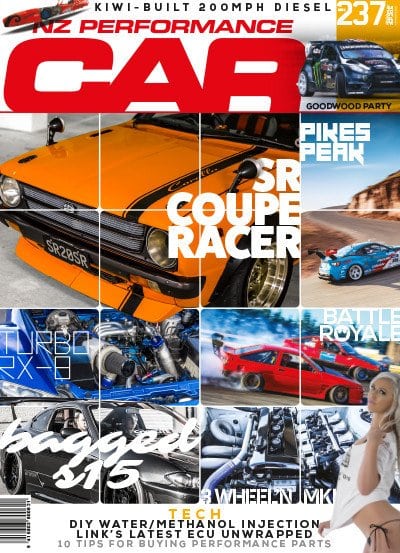Buying performance parts is something we all love to do — though just choosing what parts to buy next can be bloody hard, let alone deciding on what brand is right for your car. With so many aftermarket manufacturers offering choices, picking the right product can be a nightmare. We had a yarn with Corey and Evan from Christchurch-based company Japanese Race Supplies to get the inside word on what to look out for when it comes to buying a few of the most in-demand bits and pieces.
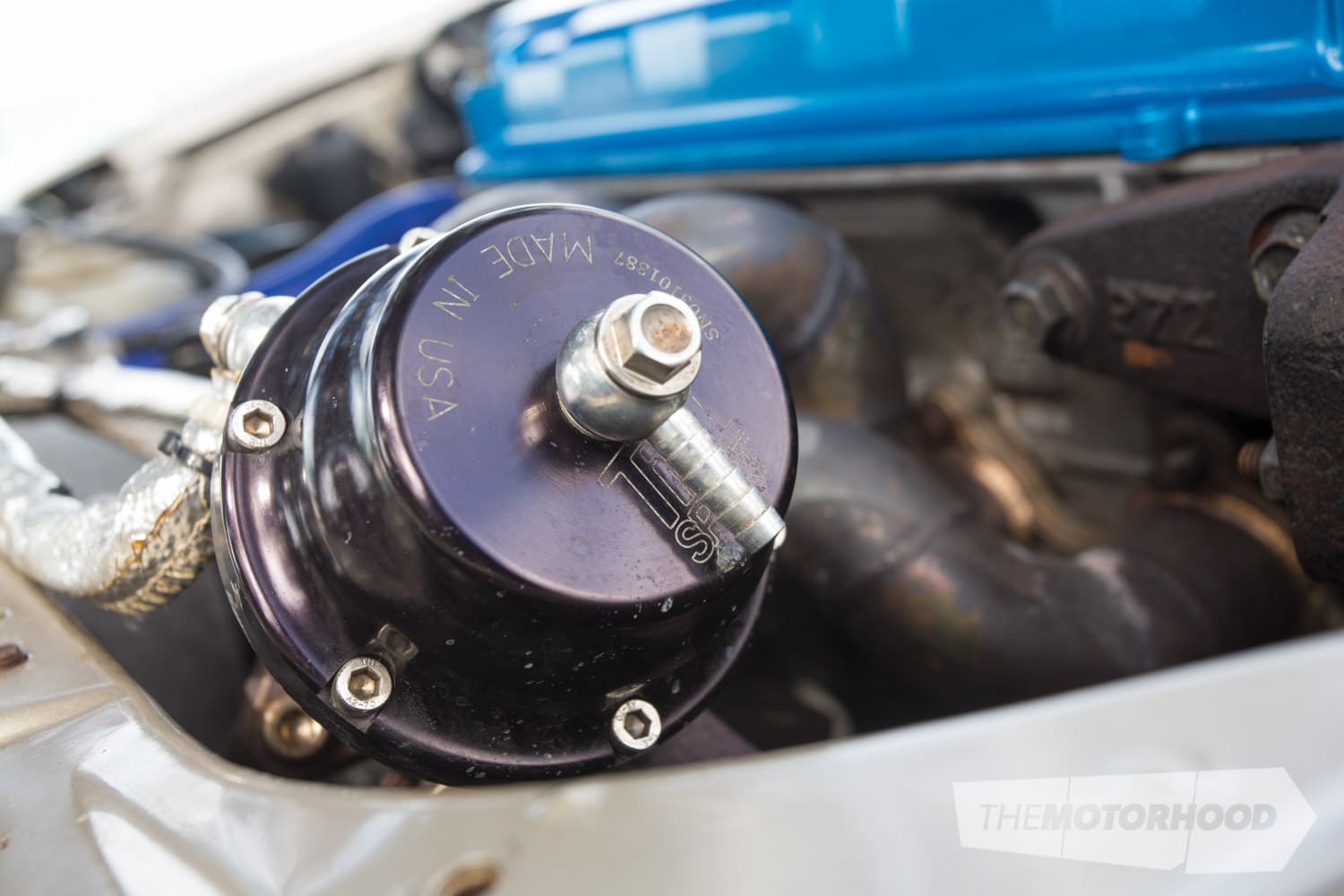
Wastegates and blow-off valves
When it comes to spending big dosh on oversized snails to slap on your engine, whatever it may be, investing in a decent wastegate, blow-off valve (BOV), or both is a decision that shouldn’t be made lightly. Both components play a vital role in a forced-induction system. The wastegate diverts excess exhaust pressure to prevent the turbine wheel from reaching an unsafe speed, or, as it’s commonly known, ‘over-boosting’, while your BOV stops nasty back pressure building up on the intake (cold) side and causing compressor surge.
Buying a trusted brand like TiAL ensures that you won’t suffer the consequences of weak or leaking diaphragms, which can lead to the mentioned issues of over-boosting or compressor surge. Knock-offs and unbranded examples are a dime a dozen, and they may be attractive due to the lower price but can end up costing you if they compromise your engine. Corey told us that most people understand straight away the risks of running knock-off units, especially after seeing photos taken of a weak diaphragm: “All it takes is a small leak to develop, and your blow-off valve starts opening or your wastegate doesn’t ventilate your pressure, and, boom, there goes your turbo or bottom end.”
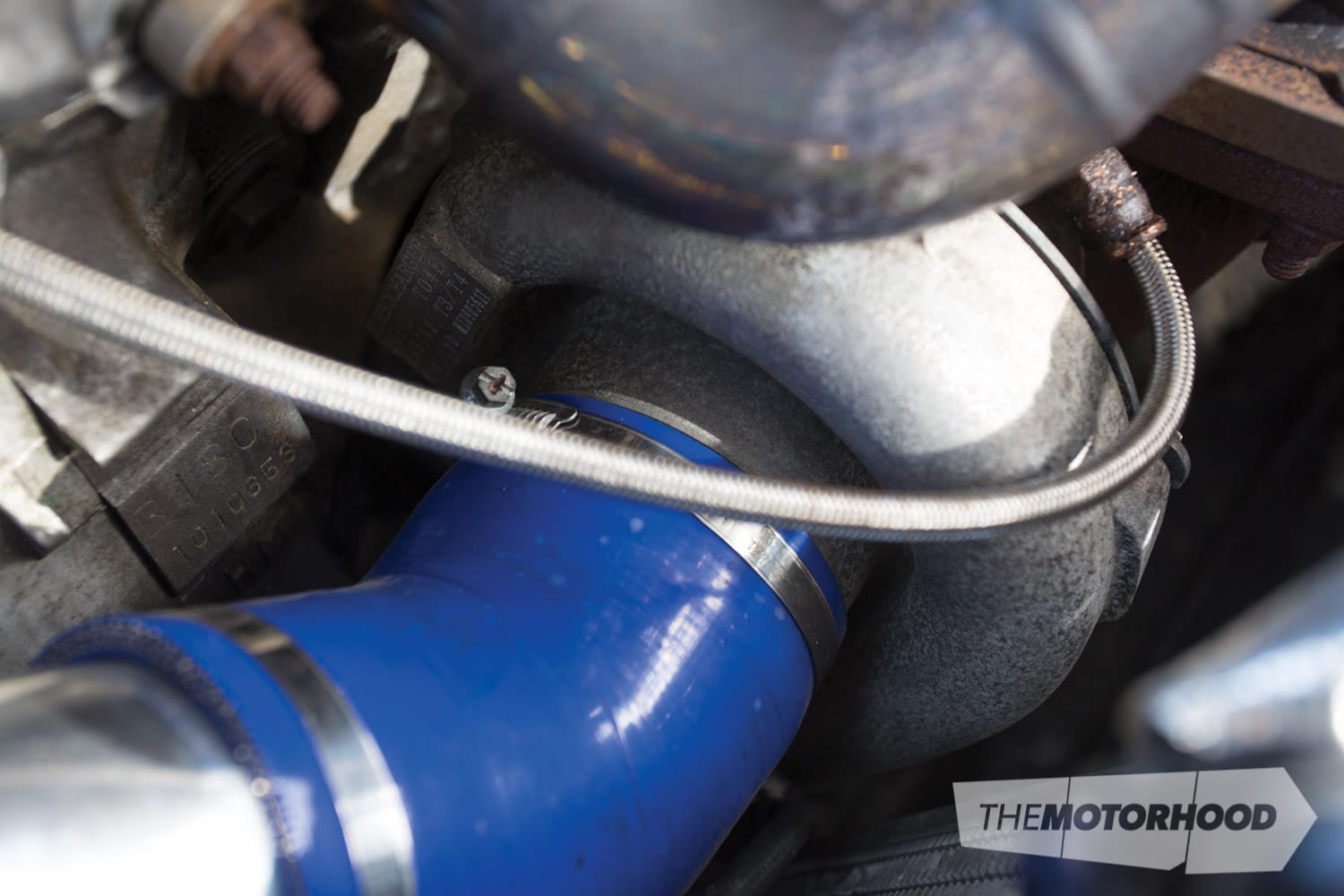
Silicone joiners
These are the staple of any turbo project car. Most of us have a few sitting in a cupboard that haven’t been used in since they were put there five years ago, and surely everyone has seen a Skyline owner exit the car to refix one of their intercooler pipes because the joiner has slipped off.
Joking aside, like any other engine component, thin or weak material can lead you down a rabbit hole of issues. Most are made from a three-ply material that is known to expand under boost pressure and pop off, or split. SRP joiners are made from a five-ply construction — thicker walls mean longer life and reliable performance. “I’ve seen the effects of cheap joiners on the dyno; they either pop off constantly and make the car un-tunable or they blow up like a balloon,” Corey said. “With a five-ply design, the SRP joiners hold their integrity and won’t give you any grief.”
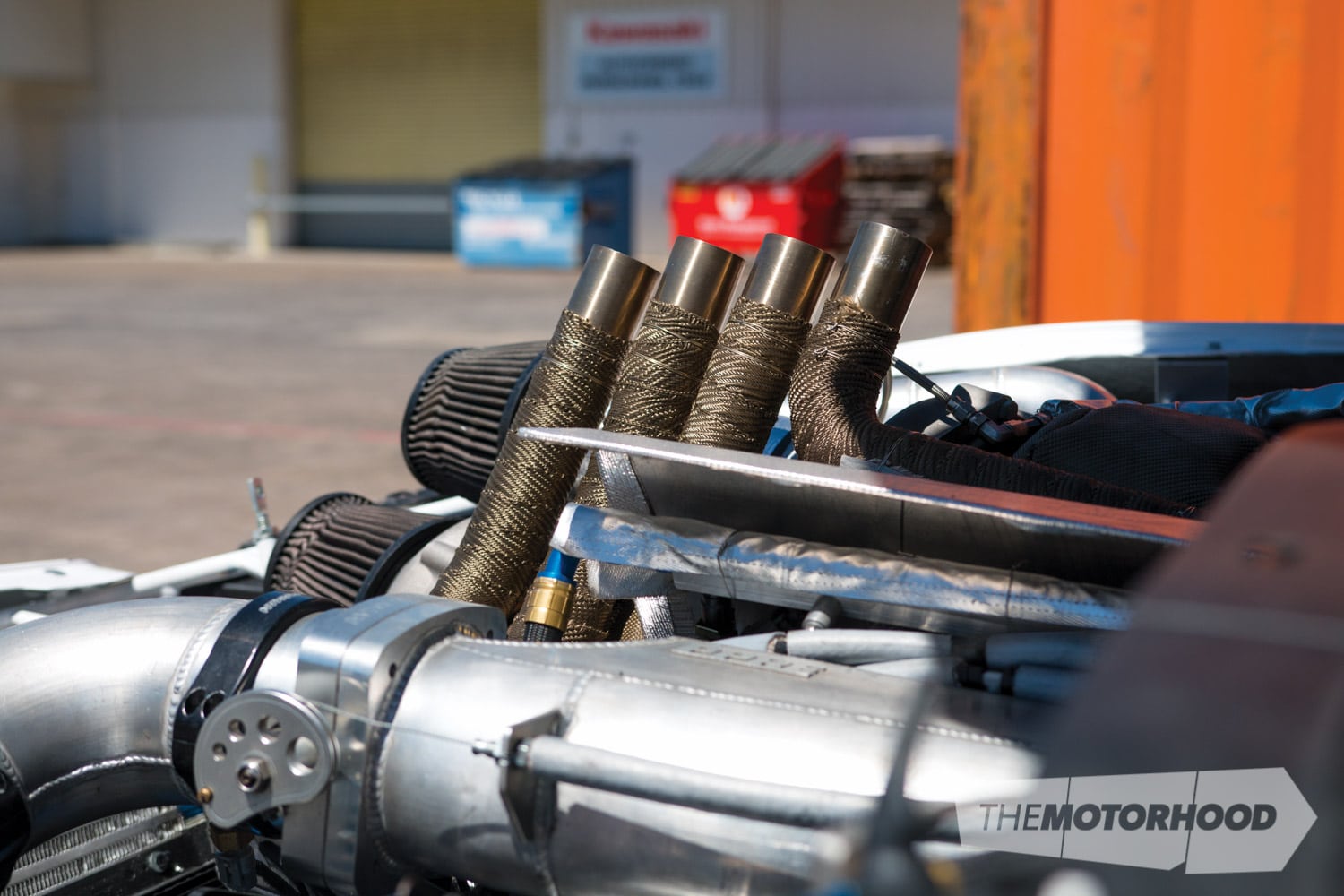
Heat wrap
We’re pretty sure the ever-wise life-guru DJ Khaled once uttered the words “keeping this cool under the hood is a major key to success”, and we tend to agree. There’s a range of ways to achieve this, including more efficiently getting cold air into the engine bay, but often overlooked is the need to keep heat from radiating from component to component. Stopping heat soak from exhaust manifolds, headers, and pipes by using a decent heat wrap not only keeps unwanted heat away from other components, but it actually increases exhaust gas temperatures as well, which helps with exhaust scavenging, raising exhaust speeds, and lowering intake temperatures.
Making your engine more efficient, cooler and hotter in the right places, while gaining performance by using a simple wrap? Blasphemous talk. “DEI [Design Engineering Inc.] Exhaust Heat Wrap is generally what I recommend when it comes to this kind of stuff,” Corey told us, “But the full range does a pretty good job of keeping temps down. ‘Mad Mike’ [Whiddett] used the DEI turbo beanie on his MX-5 build.”
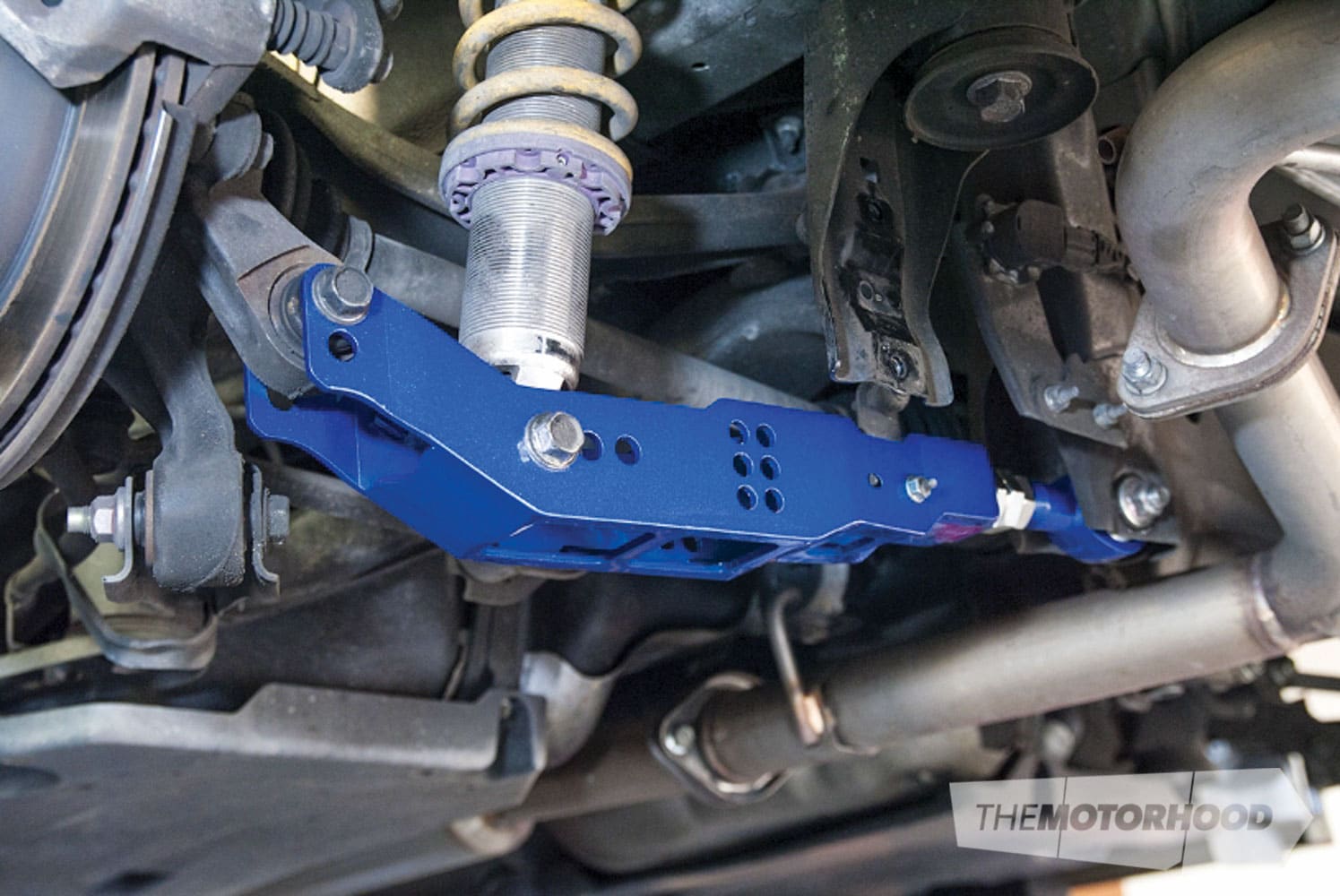
Suspension
Getting the suspension dialled in right on any car is no small feat, and, with so many options on the market, it can be rather disorienting when you’re trying to make your pick, whether you plan to slam out your weekend cruiser or set the new lap record at your local.
The guys at Jap Race believe the most important thing to consider when buying new suspension is what you will use it for and how flexible you want the set-up to be. Choosing to have more adjustment on any coilover will never be a bad thing — having that flexibility to switch between a super-stiff frame scraper to a comfortable daily-driver in minutes is a huge bonus, and so is having larger internal pistons that provide better rebound rates and lower compression inside the shock.
“It’s purely about being able to dial in your set-up to a finer degree. Having 40 levels of damper adjustability can give you that extra edge,” Corey said. “Like anything, the more you have to play with in a race application, the more you can fine-tune each corner and cut tenths of a second off each lap time.”
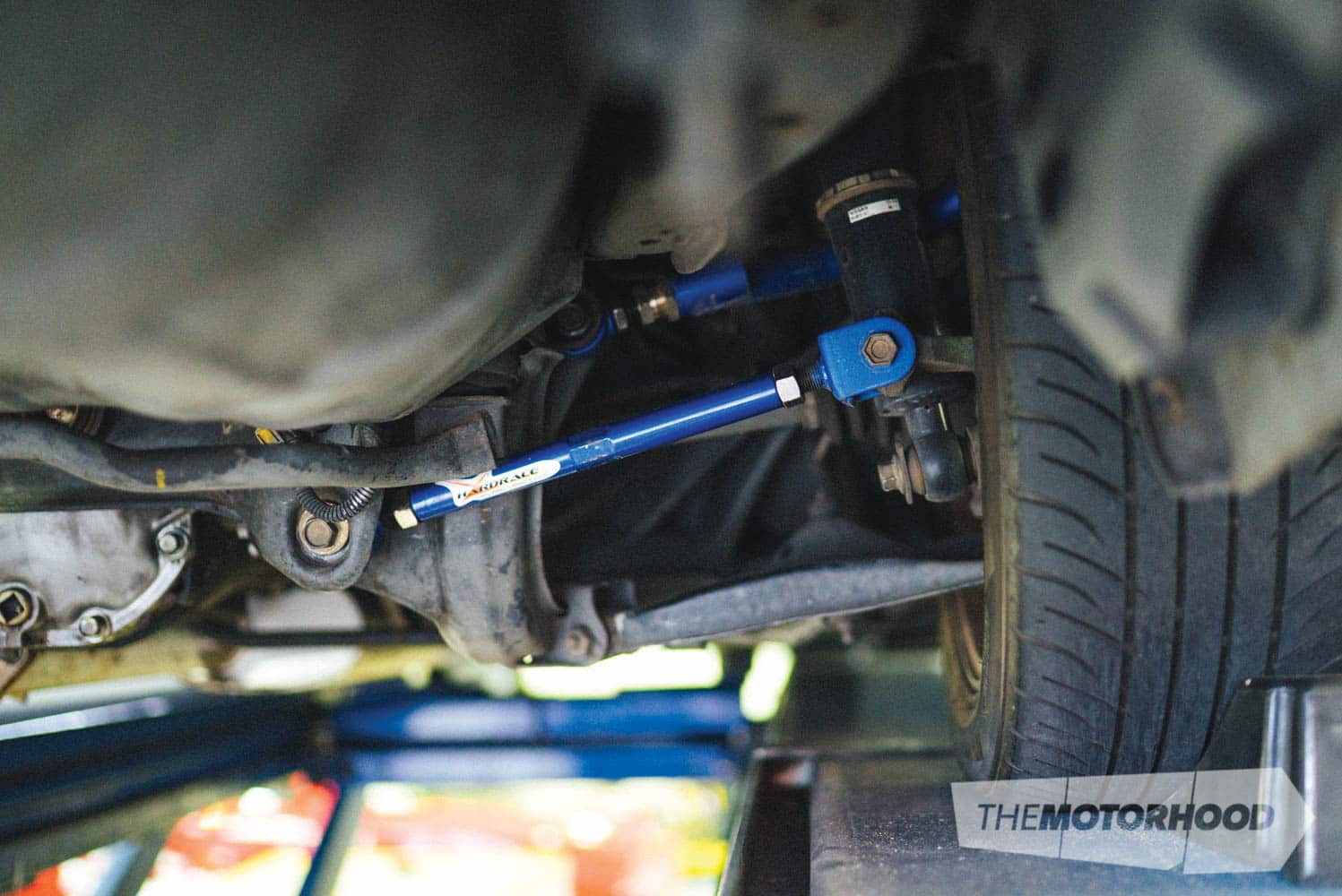
Steering arms
Being able to adjust your car’s steering arms is a necessity in both grip and drift cars when you are looking to dial in caster or fit that big-angle zero-Ackerman knuckle kit. But cheaping out here can have dire consequences, as Corey explained: “When you’re in a race car doing 160kph, you don’t want that arm to fail. Having that reliability and the backing of a properly developed part can make all the difference — not only to your competitiveness but to your safety as well.”
That’s all well and good, but if you want to drive your car to the track in the first place, you’ll need the right bits. One of the few certifiable brands on the market, Hardrace produces equipment that’s a sweet choice when it comes to kitting out your road-driven warrior, and the company also offers track-only options for those that want to get serious about dialling-in their shit. Corey said, “Hardrace has produced over 10 million bushes alone from 1998 to today, and has over 9000 current part numbers — that’s not a bad indicator of what it is capable of.”
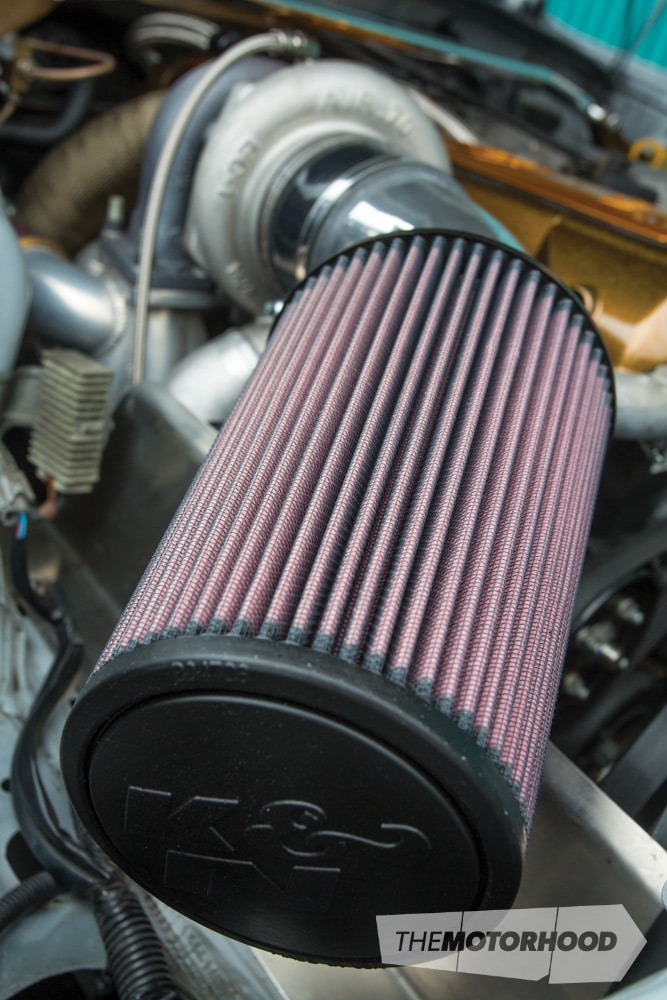
Filters
The more oxygen that can enter your engine, the more efficiently and effectively it can generate power. Filters are good for keeping stones, leaves, and other nasty stuff out of your intake, and upgrading your filter to a quality example is a cost-effective way of increasing power and efficiency in one whack. “Filters are an easy one, if you want the cheapest power gain you can buy off the shelf then you go grab a K&N panel filter — they guarantee a minimum increase of 10hp [7.5kW] as a result,” Corey told us.
To put it simply, this power increase breaks down to the cfm rating — the amount of air the filter has the ability to flow. Less restriction to the air flowing through the intake means more air can be jammed into the combustion chamber to subsequently do its thing to spin up your wheels. Although you may scoff at the idea of a pod filter, when done correctly, it makes for a genuine and worthwhile use of your time towards improving your car’s capabilities.
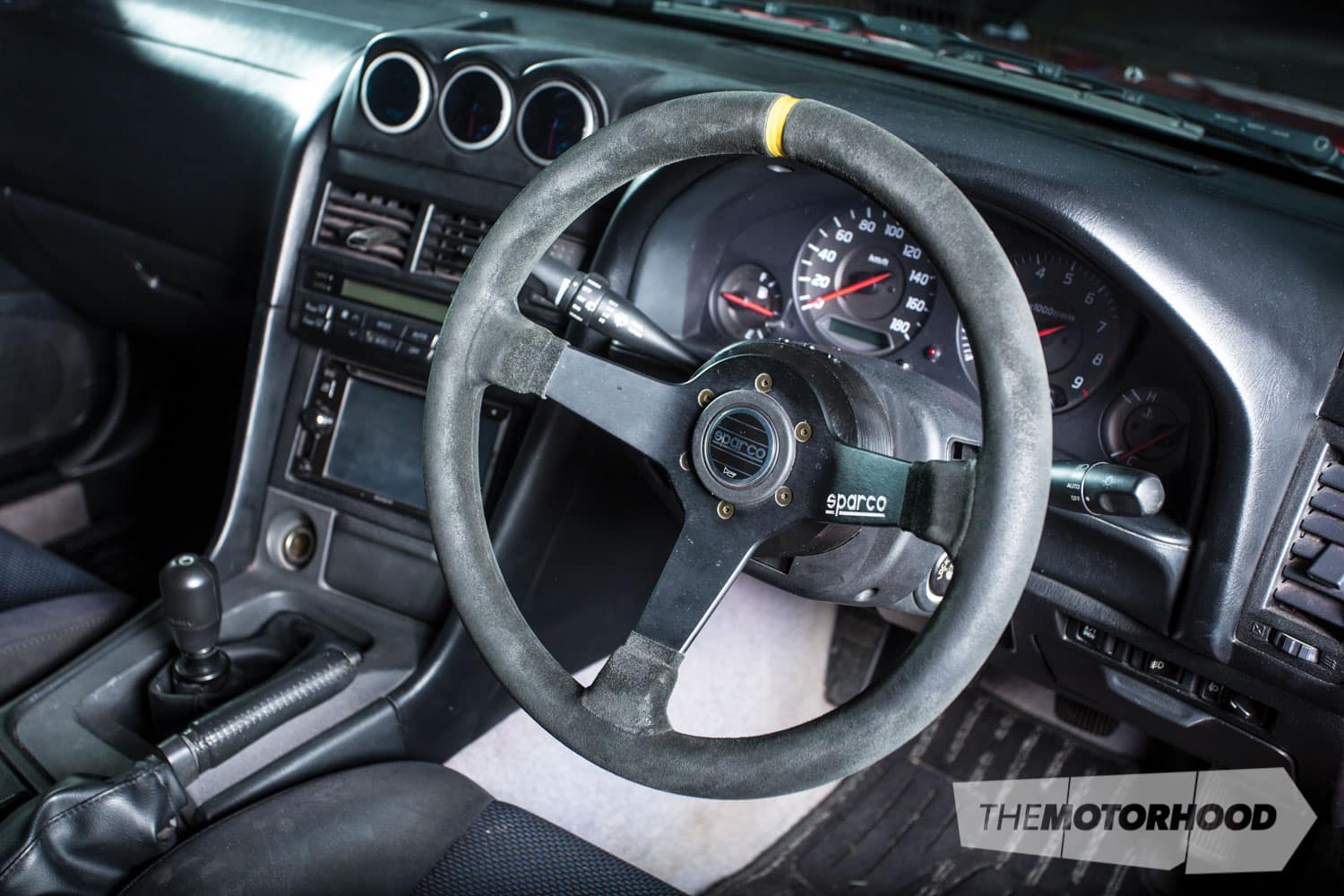
Steering wheels
The one thing all drivers spend more time doing in their vehicle than anything else is applying some form of control through the steering wheel. So, your steering wheel takes an absolute beating over the years, and, for a main component like that, safety is paramount. There are horror stories floating around about cheaply made examples bending under pressure during races, and even about those that will fold in half with a slight tug.
“We had one guy turn up wanting a new steering wheel after he [had] grabbed at his during a spin at the track, and it had folded on him,” Evan said. “I hadn’t seen anything like it before; bit of a worry that things like that are out there on vehicles, especially those racing. We fixed him up with a new Sparco, and he was away laughing.”
Although those cheap options might look good, which may be an attractive factor, along with the price, cheap units have proved to be a safety risk, and, let’s face it, who’s prepared to take that risk on their car?
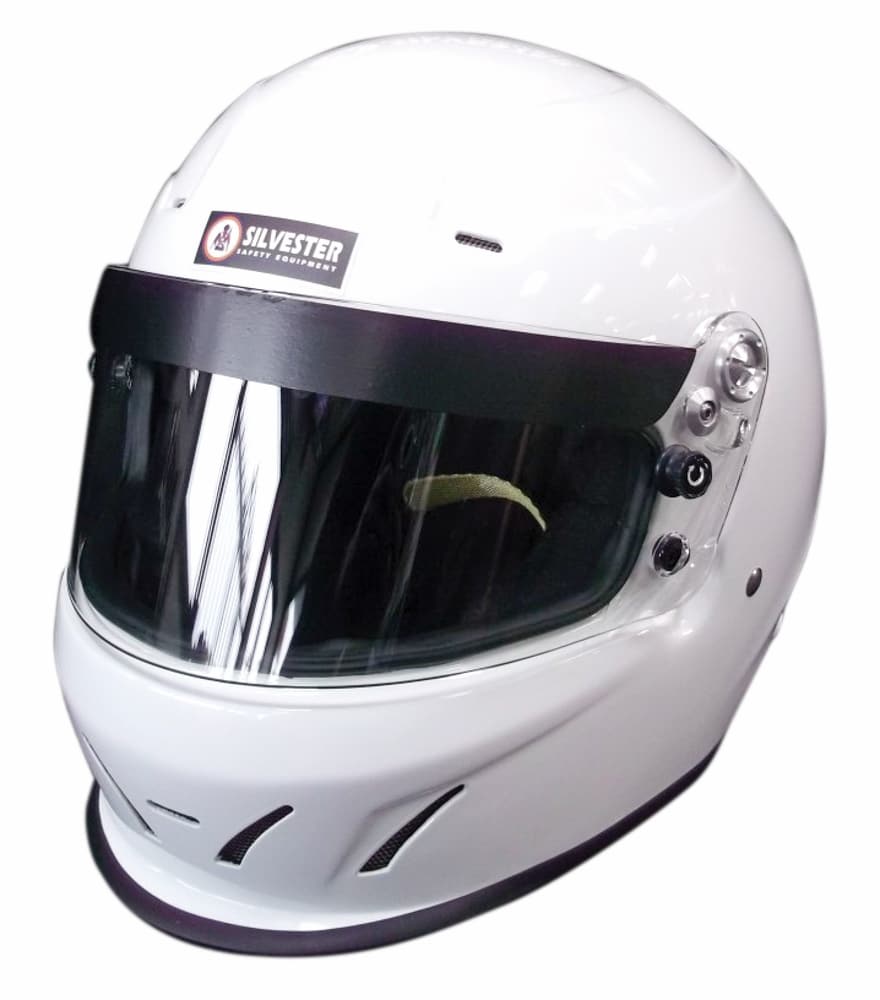
Helmets
Protecting your head should be extremely high on your priority list when it comes to motor sport, which is why there are strict specifications that need to be met by helmet manufacturers.
It’s important to research and purchase the right-specification helmet for the type of events you intend to attend. And don’t forget, the helmet you have may have been the latest technology in 1965, but it probably will not protect the same as modern examples.
Your local track day, where there is less chance of being taken out by another car at 200kph, often only requires a basic helmet; however, for something like a club event or national-level fixture, the specification increases. Non-specification helmets become a concern when they connect with other objects in the cabin, such as a roll cage, as the impact may cause the helmet to crack, even invisibly beneath the outer shell, which may lead to further injury in a serious crash. “People don’t realize how far you can move, even when locked into your bucket seat with a good harness,” Evan said. “I’ve seen in-car videos of drivers being violently chucked about and felt it myself more than I’d have liked to.”
Most important, getting the correct fit from the professionals can make all the difference — not only because you’ve got something that’s comfortable but also to ensure that your head can’t move inside the helmet enough to impair vision and that it won’t come off during a crash.
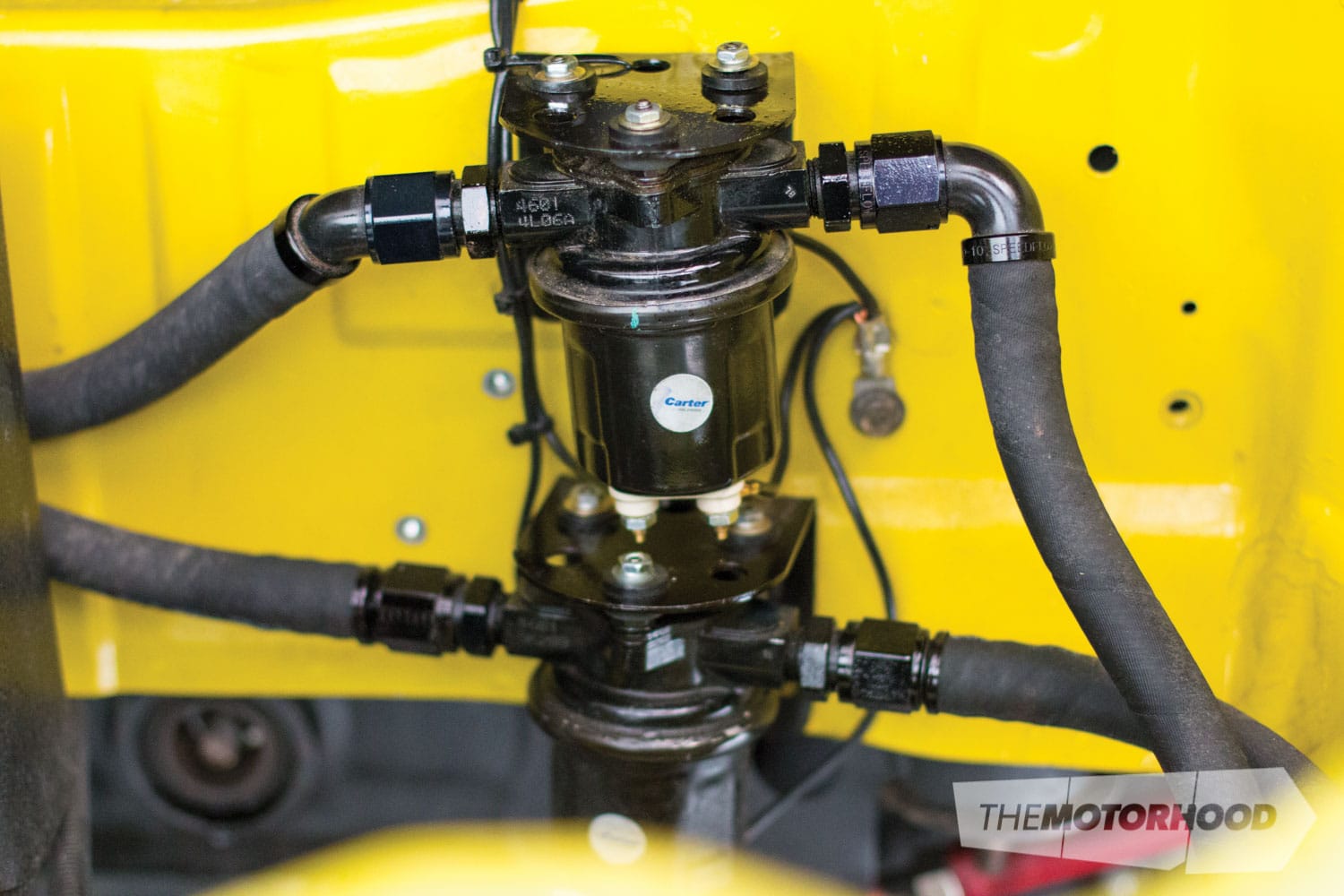
AN fittings
Fuel — 91, 95, 98, E85, or methanol, whatever it is you run — if you’re thinking of running, or currently run, an external fuel system, taking the time to step back and consider your plumbing options now may save you a lot of problems down the line. Cheap and nasty AN fittings are a pain in the ass to fit, especially over braided lines. They can break down internally over time and, most important, don’t seal well.
When dealing with high-pressure pumps in a fuel system, the first thing you want to do is make sure everything is sealed up tight to protect your investment and ensure you don’t end up running lean because ol’ mate 90-degree angle has spat the dummy in the boot and is now spraying fresh fuel everywhere. Running the right hose and AN fittings takes the worry out of driving and leaves you to do your thing undistracted. “Most South Island braided fuel systems run SRP braided lines and fittings,” Evan said. “They can handle all petrol- and alcohol-based fuels on the market and have been distributed between Jap Race and Silvester V8 over the last 10 years.”
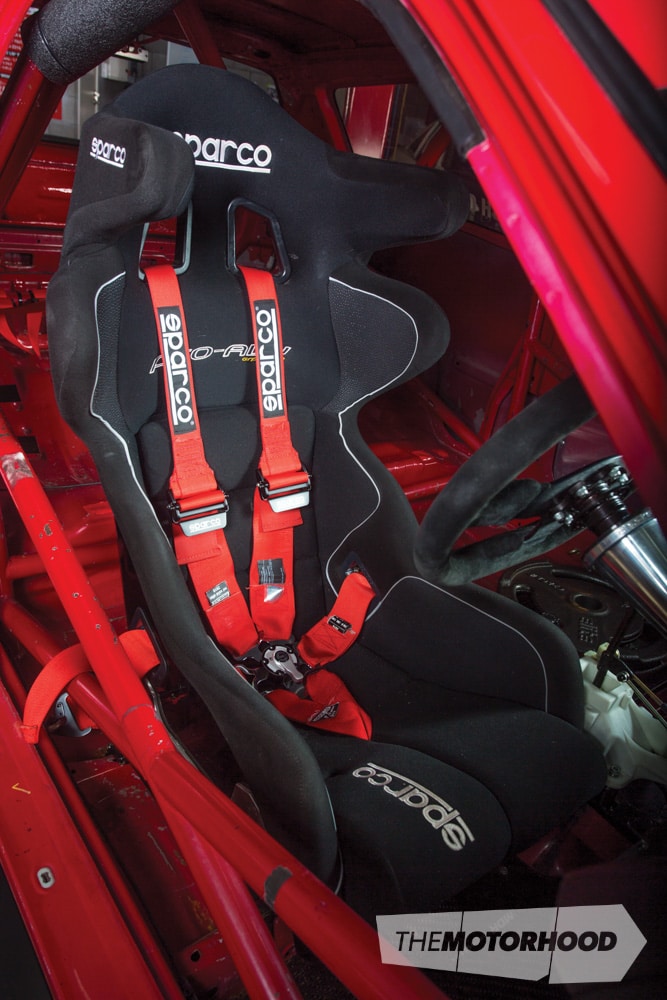
Harnesses
When it comes to installing harnesses, it’s advisable to steer clear of the four-point variety for two reasons. First, none of them is suitable for use in MotorSport New Zealand, dashing your hopes of racking up runs at Targa or becoming the next drift king. Second, if an impact does occur, the lack of crotch-support belts can result in the harness riding up and the driver sliding down under the belt, not only resulting in injuries but probably also loss of control over the vehicle.
This is why Evan told us that, ideally, a five-point option should be used, or, in the case of high-speed and single-seater applications, a six-point that locks your legs in place while holding you up into the seat — although, in 95 per cent of saloon cars, it is fine to install that five-point option. Something else to consider is the locking-mechanism specification level. “Lever-latch locks are rated to SFI American standards and are approved for two years of competition use,” he said. “Sparco lever-latch harnesses are popular with the speedway guys due to the dirty and dusty conditions they need to endure.”
Camlock mechanisms manufactured to FIA standards, like those by Sparco, are suitable for international-level motor sport for up to 10 years’ use.
So, there you have it. Cut corners and save a few dollars, or get a better, safer kit. You’re mad if you don’t. Want some advice for anything you’ve got planned? Give the Japanese Race Supplies team a call on 0800 566 525.
Grab a copy of the September issue of NZ Performance Car (Issue 237) below, and click here for more in-depth articles to help you with your buying and building decisions
